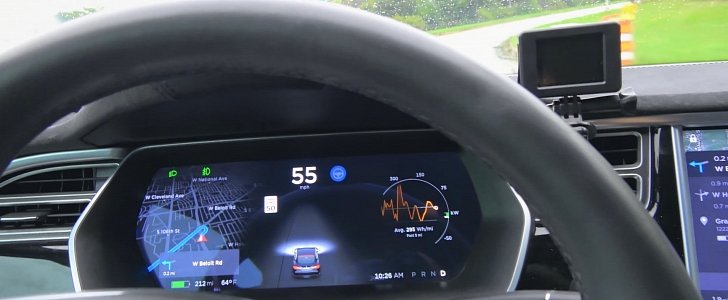Autopilot, the name of Tesla’s semi-autonomous driving assistant, might have to be changed because of new legislation proposals in California.
The problem with the Autopilot name is that California’s DMV is concerned that it might make drivers too confident in its capabilities, and that some accidents might be caused by people that thought that it could drive a car without any intervention, which is not the case with the current status of the technology.
Meanwhile, Tesla representatives have explained that the system needs more attention than the identically-named technology used in the aviation industry, where the operator must remain vigilant and monitor the system, but it cannot fly entirely without humans.
California’s DMV disagrees with Tesla and any other brand that uses terms like these. The officials at the DMV consider that a “reasonable person” might believe that the advertising using this name or with tag lines like “automated,” “self-driving,” or “auto-pilot” falls under the watch of the truth-in-advertising provisions placed in the Vehicle Code.
In other words, the Californian DMV considers that Tesla has pushed the description of Autopilot to a level that might make some people think the vehicle can drive itself, Washington Post notes.
Instead, Tesla cars with Autopilot oblige the driver to keep at least one hand on the wheel, and the human must also be aware of the surroundings to be ready to step in at a moment’s notice.
Tesla is not the only automaker that might be affected by the proposed modifications that have been imagined for the new legislative proposal. Mercedes-Benz’s all-new E-Class came with a semi-autonomous driving system, which was marketed as making the car able to drive itself. It was not, and the German company had to change its ads accordingly.
In other words, California’s DMV has big plans for driverless vehicles. However, only if those autonomous cars are entirely capable of autonomy, without any need for assistance or support from a human. The only driving-related input? The destination. Once self-driving cars can do this, they are in business.
Meanwhile, Tesla representatives have explained that the system needs more attention than the identically-named technology used in the aviation industry, where the operator must remain vigilant and monitor the system, but it cannot fly entirely without humans.
California’s DMV disagrees with Tesla and any other brand that uses terms like these. The officials at the DMV consider that a “reasonable person” might believe that the advertising using this name or with tag lines like “automated,” “self-driving,” or “auto-pilot” falls under the watch of the truth-in-advertising provisions placed in the Vehicle Code.
In other words, the Californian DMV considers that Tesla has pushed the description of Autopilot to a level that might make some people think the vehicle can drive itself, Washington Post notes.
Instead, Tesla cars with Autopilot oblige the driver to keep at least one hand on the wheel, and the human must also be aware of the surroundings to be ready to step in at a moment’s notice.
Tesla is not the only automaker that might be affected by the proposed modifications that have been imagined for the new legislative proposal. Mercedes-Benz’s all-new E-Class came with a semi-autonomous driving system, which was marketed as making the car able to drive itself. It was not, and the German company had to change its ads accordingly.
In other words, California’s DMV has big plans for driverless vehicles. However, only if those autonomous cars are entirely capable of autonomy, without any need for assistance or support from a human. The only driving-related input? The destination. Once self-driving cars can do this, they are in business.

